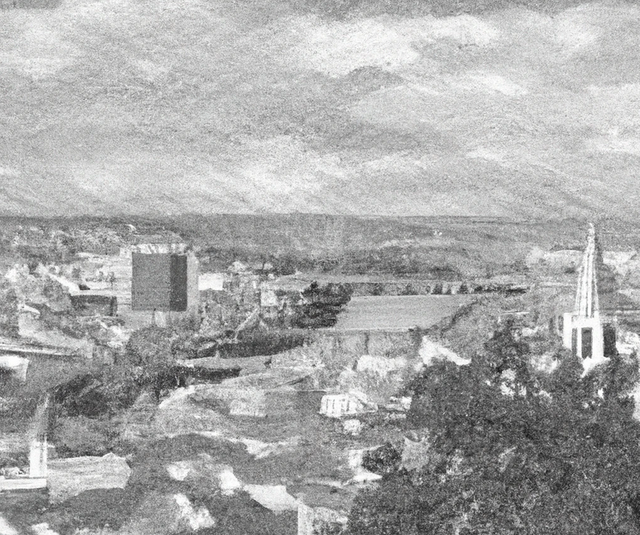A short and a longer version of the history of Bratislava.
Would you like to learn more about the history of Bratislava. Here I am giving you a short version (for those who just want a tiny glimpse), and later a longer version for those who want more details. Enjoy!
A short history of Bratislava.
The city was founded in the 9th century as a small fortified settlement called "Brezalauspurc" and became an important center of trade and commerce.
In the 16th and 17th centuries, Bratislava was the coronation city of the Hungarian monarchy and was known as "Pressburg" or "Pozsony." During this time, the city prospered, and many impressive buildings were constructed, including the castle and St. Martin's Cathedral.
In the 18th century, https://www.bratislavaguide.net became part of the Habsburg Empire and was transformed into a modern European city with new infrastructure and cultural institutions.

The city continued to flourish until the early 20th century when political and economic turmoil led to a decline in its fortunes. In 1919, Bratislava became part of Czechoslovakia, and in 1993, it became the capital of the newly formed Slovak Republic.
Today, Bratislava is a vibrant city with a rich cultural heritage and is known for its historical landmarks, museums, and picturesque Old Town.
A longer version of the history of Bratislava.
The earliest known settlement in the area that is now Bratislava dates back to the Neolithic period, around 5000 BC. Archaeological evidence suggests that the area was inhabited by various Celtic tribes, including the Boii and the Cotini, before the arrival of the Romans.
In the 1st century AD, the Romans established a military camp in the area to protect the important Amber Road trade route. The camp, known as "Gerulata," was located on the site of the present-day Bratislava Castle.
After the fall of the Roman Empire, the area was settled by Slavic tribes, who established a small fortified settlement called "Brezalauspurc" in the 9th century. The settlement was part of the Great Moravian Empire, which was one of the largest and most powerful states in Central Europe at the time.
The Medieval Period
In the 10th century, the territory of Brezalauspurc became part of the Kingdom of Hungary, and the settlement was renamed "Posonium" or "Pozsony." The city became an important center of trade and commerce, thanks to its location on the Danube River.
During the medieval period, Bratislava was a cosmopolitan city with a diverse population, including Germans, Slovaks, Hungarians, and Jews. The city was also home to a number of important religious institutions, including St. Martin's Cathedral, which was built in the 13th century and became the coronation church of the Hungarian monarchs.
In the 14th and 15th centuries, Bratislava was granted numerous privileges by the Hungarian kings, including the right to hold markets and fairs, and the right to build fortifications. The city's prosperity continued to grow, and by the 16th century, it was one of the largest and most important cities in the Kingdom of Hungary.
The Renaissance and Baroque Periods
In the 16th century, Bratislava became the coronation city of the Hungarian monarchy, and many impressive buildings were constructed, including the castle and St. Martin's Cathedral. The city also became a center of Renaissance art and culture, with many Italian artists and architects working on the construction of new buildings.
In the 17th century, Bratislava experienced a period of great prosperity under the rule of the Habsburg Empire. The city became a center of Baroque art and architecture, with many beautiful buildings constructed during this time, including the Primate's Palace and the Jesuit Church.
The 18th Century and the Habsburg Empire
In the 18th century, Bratislava became part of the Habsburg Empire, and the city was transformed into a modern European city with new infrastructure and cultural institutions. The city's fortifications were dismantled, and new roads and bridges were built to connect the city with other parts of the empire.
During this time, Bratislava became a center of the Enlightenment, with many intellectuals and artists living and working in the city. The city also became a center of music, with many famous composers, including Joseph Haydn, performing in the city's music halls and theaters.
The Decline and Modern Era
In the 19th century, Bratislava's fortunes began to decline due to political and economic turmoil in the region. The city was affected by the Napoleonic Wars, the Hungarian Revolution of 1848, and the subsequent Austro-Hungarian Compromise, which saw the city lose its status as the capital of Hungary.
In the early 20th century, Bratislava was hit hard by World War I and the breakup of the Austro-Hungarian Empire. The city became part of Czechoslovakia in 1919, and its population was greatly reduced due to the forced relocation of ethnic Germans and Hungarians.
During World War II, Bratislava was occupied by Nazi Germany, and the city suffered heavy damage as a result of Allied bombing raids. After the war, Bratislava became part of communist Czechoslovakia, and the city underwent significant redevelopment to reflect the ideals of socialist realism.
In 1993, following the Velvet Divorce, Bratislava became the capital of the newly formed Slovak Republic. The city has undergone significant redevelopment and modernization, with many new buildings and public spaces constructed recently.
Today, Bratislava is a vibrant city with a rich cultural heritage and a thriving tourism industry. The city is known for its historical landmarks, museums, and picturesque Old Town, which features cobblestone streets, charming cafes, and stunning architecture from various periods of its long and fascinating history.